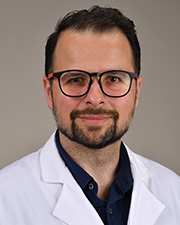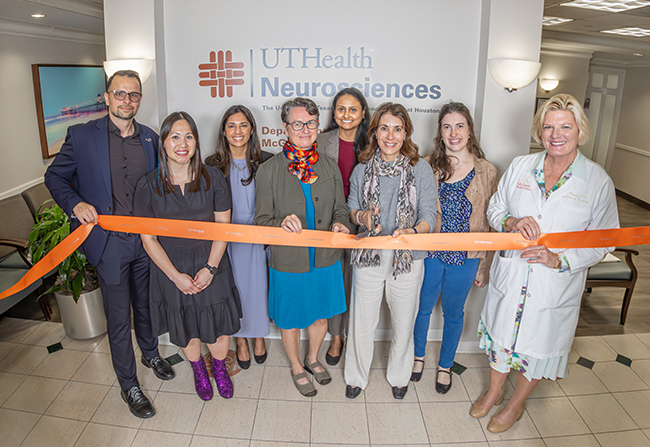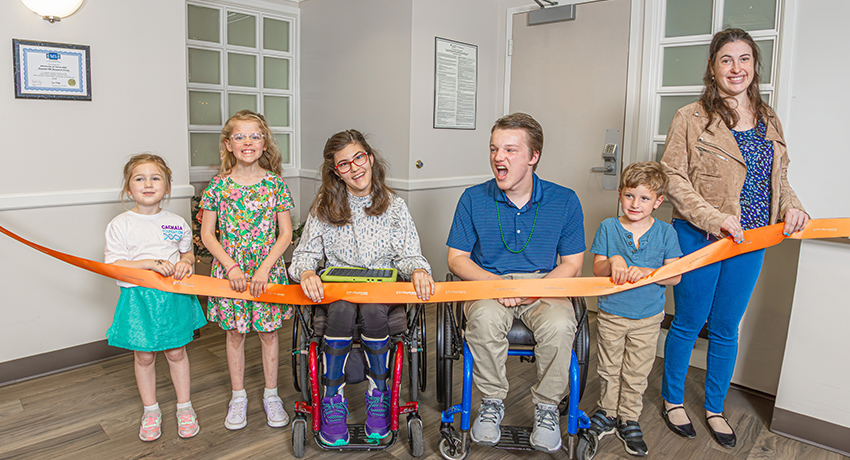With smiles and laughter, six patients, their families, and more than a dozen providers gathered for the ribbon cutting of the Multidisciplinary Center for CACNA1A-Related Disorders.

“This is a deeply moving milestone,” said Dennis Lal, PhD, the founding director of the Center for Neurogenetics at UTHealth Houston. “I feel a profound sense of pride, gratitude, and excitement. It marks not only the inauguration of a dedicated space for our patients but also the culmination of years of hard work and vision.”
“This is exciting, hopeful, and much more emotional than I anticipated,” said Pangkong Fox, PhD, the science engagement director for the CACNA1A Foundation. Fox, along with Lisa Manaster, co-founder and president of the foundation, and Sunitha Malepati, vice president and treasurer, flew to Houston specifically for the celebration.
What is CACNA1A?
CACNA1A is a gene on the 19th chromosome that encodes for a protein called a calcium channel. This channel is important for communication between neurons in the brain. Patients with mutations or permanent changes in CACNA1A can develop various neurological symptoms. These can be such things as ataxia, epilepsy, developmental delays, hemiplegic migraines, eye movement disorders, cerebellar atrophy, and intellectual disability.
First of its kind
The multidisciplinary program at UTHealth Houston is the first to approach the broad spectrum of variants within the CACNA1A gene by combining neurology, genetics, and other specialties to address and help manage the complexity of each case.
“A dedicated CACNA1A program is crucial because these patients have unique, complex neurological needs,” explained Lal, an associate professor of neurology with McGovern Medical School at UTHealth Houston. “Our team will provide specialized diagnostics, tailored treatments, and ongoing support that traditional care settings often cannot offer. Further, many aspects of the CACNA1A-related disorders are not yet understood, and through our new center, we can perform research to fill these knowledge gaps.”
CACNA1A-related disorders are rare, making the diagnosis a lengthy process and treatment even harder to find.
“My 9-year-old son Alex was diagnosed with CACNA1A-related disorders three years ago,” said Fox. “We were not given any other information beyond the diagnosis. With this program, for the first time, there is a place for families to find answers for care.”
Center for hope
Without any treatments specific to CACNA1A-related disorders currently available, the center will help jump-start the collective research for a cure. It will provide hope for better care and lead to future clinical trials.

“My hope for this first CACNA1A center is that it becomes a beacon of hope and a model of excellence in precision medicine,” said Lal. “I envision it accelerating research, fostering innovation, and ultimately improving the quality of life for patients and their families.”
“I hope that newly diagnosed families won’t have to go through the experience of feeling lost and alone,” said Fox. “Beyond a place for care and expertise, I also hope the program will become a place of empowerment for families, where their experience matters because the clinicians are invested in learning as much about CACNA1A-related disorders as possible.”


